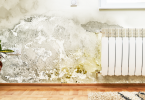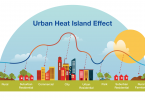COVID-19 or coronavirus swept over the world in a matter of months, confining everyone to their homes and forcing a global digital revolution. Its impacts are felt in every facet of society, from an individual’s emotional and social health to the broader consequences felt in the built environment, i.e. in architecture.
600 mg neurontin (Source: Sojat The New Yorker buy Lyrica pills )
The hygiene levels demanded by COVID-19 simultaneously require a cleaner, more pollution-free environment – something that begins at home. Therefore, sustainable homes that promote environmental consciousness are on the rise as harbingers of clean air and lower environmental impacts.
order stromectol The Current Scenario
As we shift to work-from-home environments (with many companies indicating a permanent shift), the importance of the home comes into focus. Working from home does not mean that we suddenly have more than 24 hours in a day. It simply means we spend more time within the four walls of our homes, hoping that we are safer from the virus.
Eco-friendly homes, in this regard, offer a double benefit: they clean and purify the air indoors, reducing the risk of airborne diseases, and they reduce the overall environmental impact. Architecture has long been a contributor to global warming, with Ed Mazria, the founder of Arch2030, saying that buildings will account for 60% of greenhouse gas emissions by 2050.
Therefore, urban and architectural planning will undergo a radical shift post-COVID. The goal will continue being providing the safest possible spaces that protect humans from COVID and any potential future virus of this magnitude. The built environment was not previously concerned with social distancing, therefore not accounting for it during the planning process. COVID changed this and is now causing indoor gardens, more partitions, and fewer open-plan spaces. These are all indicative of green or healthy housing techniques by preventing high-density crowding and giving people the feel of the outdoors from their homes.
Therefore, several consequences may be here to stay in the post-COVID world of sustainable homes.
The Future of Eco-Friendly Homes
(Source: World Green Building Council)
Although we have already mentioned a few possibilities, these remain the tip of the iceberg. People are more vigilant about their homes while trying to create the feeling of being outdoors. Staying cooped up at home all day can take a toll on one’s mental health, otherwise. With this in mind, we want to present some predictions for the critical changes that will stay in a post-COVID world.
Open Spaces
Open spaces allow for the 6-feet apart mandate that prevents the virus from spreading. However, they also make places look bigger and lessen crowding. Such positive factors are in line with the WHO’s 1988 report that spoke of urban centers being hotspots for infectious diseases – something we see now in 2020.
Therefore, open spaces are the first aspect that we believe is here to stay. In sustainable homes, open spaces in the form of verandas, porches, balconies, etc. will be covered by buyers more than floor space. Additionally, the comorbidities caused by a lack of Vitamin D can make individuals more susceptible to COVID-19. This additionally makes open spaces more desirable for homebuyers.
Natural Ventilation
Artificial ventilation can cause air staleness. If the temperature is not regulated adequately through this ventilation, it can also lead to condensation on calls, leading to mold and other such problems. Natural ventilation allows for a literal breath of fresh air to continually flow through the house.
Incorporating natural ventilation also reduces the need for air conditioners and other such mechanisms that adversely impact the environment. This automatically paves the way for eco-friendly homes.
Building Materials that Promote Health
The kind of building materials determines the home’s insulation ability and temperature regulation. Depending on the climate the house is built in, designers will have to choose materials that will not place the occupants at risk. All-natural alternatives are an excellent way to ensure this.
Using all-natural paint, for example, prevents the likelihood of toxic fumes being released into the environment, automatically erasing a chance of illness. Therefore, the occupant stays safe and, as long as the paint is a light color, stays cool in our tropical climate. Similarly, using clay bricks or terracotta tiles promotes cooler indoor environments – something particularly necessary during Indian summers – while ensuring sustainable homes.
Office Spaces
As we previously said, work-from-home is set to become a norm of the post-COVID era. Therefore, functional, stress-busting office spaces are necessary. Incorporating greenery and lighter paint tones create stress-busting, calmer environments while creating eco-friendly homes that keep the indoor air pure in a natural, healthy way.
Meanwhile, using studies instead of desks can create more functional spaces. Here, ensure that you purchase eco-friendly furniture since furniture glue can adversely affect the air quality.
AI and Touchless Technologies
(Source: Echelon | Ai)
Saying we entered a new digital era with COVID-19 would be an understatement. AI and touchless technologies prevent virus transmission by reducing contact. They also automate environments, introducing the idea of smart homes.
Smart homes are safer while being sustainable homes in their own right. Using motion detectors to turn on lights, automatically open doors at the touch of a button, etc. are ways in which homes can evolve to meet the demands of an increasingly digital world.
Conclusion
Architecture and house planning will be different in a post-COVID world. The advantages of smart housing and sustainable living are here to stay. They offer a higher level of safety against diseases like COVID-19 while also presenting more aesthetic and less stressful spaces for occupants to use.








